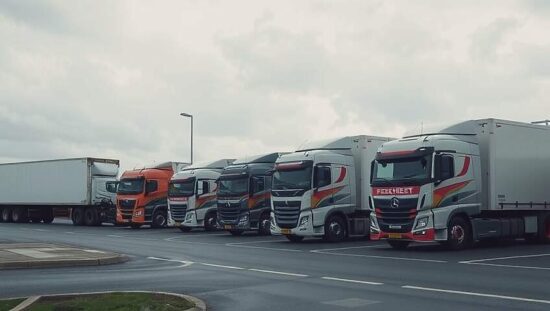Leading European truck manufacturers, DAF and MAN, are intensifying pressure on the European Union to critically re-evaluate its stringent regulations aimed at reducing carbon dioxide emissions from heavy-duty vehicle fleets. The escalating concerns center around the viability of current timelines and the potential for unintended consequences impacting the continent’s industrial base.
Alexander Vlaskamp, CEO of MAN, voiced strong reservations, stating bluntly that “Europe must not destroy its own industry”. This sentiment is echoed by Harald Seidel, CEO of DAF, who warned that achieving widespread adoption of electric trucks by 2030 is simply unattainable under the present framework. Despite substantial, hundreds of millions of euros invested in alternative propulsion technologies, battery-electric trucks currently account for a meager one to two percent of sales. This bottleneck, they argue, isn’t due to a lack of supply but stems from the technology’s unproven economic benefit for transport operators and a severe shortage of charging infrastructure.
The EU’s “Fit-for-55” package mandates a 45% reduction in the average CO2 emissions of newly sold truck fleets starting in 2030. Failure to comply triggers significant financial penalties for manufacturers, a threat the industry leaders now view with increasing alarm.
Seidel is advocating for an accelerated timeline, pushing for the EU to bring forward the planned 2027 review of fleet emission limits by a year. He argues that the impending CO2 levy, slated to begin in 2027, will disproportionately impact end consumers, fueling inflation if electric trucks remain economically unfeasible for transport companies.
MAN’s Vlaskamp has further proposed a truck scrappage scheme, designed to incentivize the replacement of older, more polluting vehicles. Furthermore, the industry is offering a compelling counter-proposal to EU policymakers: increased investment in charging infrastructure for electric trucks in exchange for a relaxation of stringent regulations like the Euro-7 emissions standard.
While acknowledging the ultimate targets are achievable, Seidel emphasized the critical need for a dramatic acceleration in the development of public charging points, estimating a requirement of at least 10,000 new facilities by 2030 – a stark contrast to the current availability of just 1,100.
The current regulatory regime, while spurred by the urgent need to mitigate climate change-as underscored by the International Court of Justice’s recent assertion that states exceeding the 1.5-degree Celsius warming threshold could face legal liability-is now facing a crucial juncture. The industry’s pleas highlight a burgeoning conflict between ambitious climate goals and the practical realities of industrial transformation, raising questions about the EU’s approach and the potential for unintended economic damage. The coming months will be critical in determining whether a compromise can be reached that balances environmental ambition with industrial competitiveness.





